“The world of puppets is the world of curiosity and asking questions; it is the world weary of anger and violence, wishing for happiness and peace for everyone on the planet,” this is how Mehdi Shafiee, Director-General of Performing Arts at the Ministry of Culture and Islamic Guidance, described Tehran International Mobarak Puppet Theater Festival. Veteran puppeteer and director Marzieh Boroumand, who is known by many artists in the field as the ‘spiritual mother of puppet shows’, was the director of this year’s edition of the popular festival, now in its 16th year, and she, too, had the same vision of peace and love for the puppet show: “In a world brimming with violence, hatred and horror, in an air full of smoke, pollution and dust risen from poverty, war and ignorance, it is the puppets who are talking of love, of peace and friendship, of equality and justice,” Boroumand wrote in her message for the festival, “we are of the belief that with the help from art and artists, the earth will be one day cleansed of all evil and the sky will turn a brilliant blue all across the globe.”

The puppet festival, first in its employing of dolls that symbolize childhood and in essence, innocence and purity, and second, for it being an effective and wonderful artistic medium that reaches out toward children and adults alike to link them back to the childhood they have forgotten in the humdrum of their everyday lives, is truly an occasion for much rejoice and excitement. For its opening on 22 August in Tehran, the festival had previously informed all who wished to attend the opening to come with their dolls. Children were holding onto their parents’ hands with one hand and with the other, grabbing onto their most beloved doll they had deemed special enough to accompany them on this wonderful journey through the metropolis. The number of public participation at the opening was so high that it even surprised the festival’s contributors. Giant dolls made in the shape of Persian folklore characters walked tall and proud among the gathering crowd; Rostam, the national hero of Greater Iran, Div, evil creature of chaos and disorder, and Kaveh, the blacksmith who led a popular uprising against a merciless foreign ruler, Zahhak, all of whom immortalized by the 10th-century poet Ferdowsi in Shahnameh, and perfectly familiar to the Iranian children. Mobarak, the mascot of the festival, as the world’s tallest puppet standing at a six-meter height, was also one of the giant puppets that walked through the carnival to the excitement and enjoyment of all children and their parents. The puppet, made of recycled materials, was designed by French artist Fleur Marie Fuentes during Iran's 13th Mobarak International Puppet Theater Festival, and unveiled during the Iranian Art Week held in the United Arab Emirates (UAE) in December 2010.

The carnival marched on for two hours to a tune familiar to children of the 80s and 90s, the soundtrack of a popular puppet TV show called ‘Grandma’s House’, directed in 1987 by none other than Marzieh Boroumand herself. It was actually the parents at the carnival who were singing the lyrics aloud, “Grandma’s house has thousand stories…grandma’s house has both joy and sorrow…”
Boroumand, who was leading the joyful carnival with a puppet in her hand, wished for peace and security in all parts of the world; “I wish that no child would spend a night in terror. I wish for justice to be upheld all over the world, and I wish for happiness and joy for all families and children, especially the Iranian people.”
According to Salma Mohseni, Board Member of Mobarak UNIMA, the first permanent venue for children theatre was established by Behrooz Gharibpour in 1979, in the Institute for Intellectual Development of Children and Young Adults (IIDCYA, Kanoon). The second edition of international festival of puppet theatre was held in 1989, this time under the supervision of the Ministry of Culture and Islamic Guidance. Since then this festival has been held every two years and attracts many artists from Iran and abroad.
For this year, the week-long festival included seven foreign plays performed on an indoor stage while two others were performed outdoors. The indoors plays were ‘Writer’ from the Netherlands, ‘Piped Piper’ from Czech Republic, ‘Odysseus’ from Russia, ‘Images of Truth’ from India, ‘Peter the Tiger’ from Ukraine, ‘Shirin’ from Afghanistan, and ‘Extraordinary Voyage’ from Germany.

The international outdoors plays that were performed to an enthusiastic crowd of hundreds included ‘Colorful Dinosaurs’ from Spain and ‘Poem about the Sun and the Moon’ from Poland. The Spanish performance directed by Miquel Seto and Josep Maria Lai was about three gigantic, colorful dinosaurs that were trying to bring children outside of the world of computers. The Polish show directed and written by Viktor Viktorczyk, is the story is of the creation of the world that moves through time and history to finally arrive at the era of aliens.
The performances used various puppetry techniques such as shadow plays, marionette, giant puppets and object theater in a bid to add more variety to the international section.
Notable among the list, was ‘Images of Truth’ about the life of Mahatma Gandhi, which was directed by Dadi D. Pudumjee, the UNIMA President who was also present at the festival in Tehran. UNIMA which stands for Union Internationale de la Marionette is the world's oldest theatre organization. The Iranian branch of UNIMA, called Mobarak UNIMA, revived its activities in 2009 after two years of hiatus, and its objectives center on providing support and training for various puppetry groups across the country.
The ‘Mobarak International Puppet Theater Festival’ also triggered a movement which led to the inauguration of the ‘House of Puppets’ in February 2015 in Tehran, to serve as an academy in the field of puppet theatres and performing arts. This is while a number of countries in the world are deprived of a specialized center for puppetry education, and the line of interested audience is very short. One such country is the Netherlands, which interestingly enough, had a representative in this year’s puppet festival.
The playwright and puppeteer of ‘Writer’, Ulrike Quade, told me that in the Netherlands, there are not so many puppeteers, in fact, “almost no puppeteers at all. There is no school for them, so I always work with actors or dancers or mime artists, and teach them the techniques of puppetry while I work with them.”
Puppetry in Iran, by contrast, goes as far back as to ancient times of pre-Islamic Persia where practitioners of the ancient cult of Mithras, an Indo-Iranian religion practiced in the 14th century BC, used masks and probably dolls in initiation ceremonies. But when one talks of puppetry of Iran, in the form that exists today, the roots go back to the 11th century, to the poetry of Omar Khayyam (1048-1131) and Attar of Nishapur (1145-1220) which contains many metaphorical references to string or shadow puppet shows. Although not as popular as it used to be and as it deserves to be now, puppet theater in Iran is still alive, either as a traditional form such as Kheimeh-shab-bazi (literally, ‘evening performance in a puppet booth’, since 17th cent.), or employing more modern and experimental approaches for creating shows that most often target an adult audience. According to Hamidreza Ardalan, President of Iranian UNIMA, Iran is home to hundreds of various types of puppets and ritualistic puppet shows, most of which are still alive even in the remotest parts of the country.
But what is the appeal of puppetry, especially to those who do not have the same rich heritage of this beautiful art performance in their country? For Ms. Quade, it is the magical aspect of the performance and the scope that puppetry can reach, while other modes of theater simply cannot.
“Puppetry gives us a landscape to bring our dreams into the tangible world,” she said of her own personal reason for practicing what is essentially nonexistent in her country. “It enables us to see the magic, to look at the world the way children do, and forget about being an adult.”
“With puppet theater, you can manage what you cannot while working with actors instead of puppets,” she added. “When you’re a puppeteer, you put yourself back to show the great, magical world, but when you are an actor, all you can show is a human being. So the world of puppets is much bigger than just one person and you can accomplish more when you have puppets at your disposal.”
Her ‘Writer’ opened this year’s Mobarak festival at the main hall of City Theater, which is the biggest performing arts complex in Tehran. The performance, which received an enthusiastic reception in its two show times, narrated the life of Knut Hamsun, a major Norwegian writer who was awarded the Nobel Prize in Literature in 1920. The show, which was intended for an adult audience and used the English language for the dialogues while Persian subtitles were displayed on monitors, talked of the responsibility of journalists and writers during the war. Hamsun, who is considered as the father of modern literature with his famous novel ‘Hunger’ and his use of stream of consciousness and interior monologues influencing later authors such as Franz Kafka, Ernest Hemingway, and Charles Bukowski, was in fact a supporter of Hitler, and his far-right political views have turned many readers away from him. He was a great writer, but his open support of the Nazis and his betrayal of his country and humanity, caused him to fall as a public figure and be shunned by the literary establishment. When he died, many did not attend his funeral, because he never apologized for his views and they did not want to pay respect to the body of a Nazi. Quade’s ‘Writer’ was in a sense, a redemptive narrative for Hamsun, written in 2009 and on the occasion of his 150th birthday.

“I chose three different sizes of the puppet to represent Hamsun,” she said after the performance, while pointing to the puppets still on the stage behind her. “The small one is the one that receives the Nobel prize for ‘Growth of the Soil’ when he’s about 60 years old; the life-size Hamsun is from the book ‘Hunger’ that he wrote and the giant puppet is when he’s 92 years old and writing his last masterpiece before his death.”
“Hamsun was living in the north of Norway, so he did not have much contact with World War II,” she said, “and he was writing in praise of Hitler during that time, but afterwards he never said sorry, so in this last story he’s writing in ‘Writer’, there’s maybe a sense that he’s trying to admit that he was wrong, that he regretted it.”
Somewhere in ‘Writer’ the dichotomy between ‘literature’ and ‘reality’ came up, which made me ask what kind of ‘lie’ her performance was putting on display for the audience; “obviously, the redemption arc I allowed my Hamsun to have is made-up, as Hamsun never apologized for his Nazi sentiments. We received a lot of criticism in Norway because of that; people would say ‘we have studied all history books and nowhere does he ever say sorry.’ But this is fiction, so we can make up our own stories. We don’t need to make it a historical paly.”
“We wish that he had said sorry and by this performance, I want the German and Norwegian young generation to come together,” she said, while adding that Hamsun would probably be fine with ‘Writer’ as she had used his technique of collage to make the performance.
The 16th edition of Tehran International Mobarak Puppet Theater Festival came to an end on August 28, after a week of over 80 performances from across the country and abroad. The closing ceremony was held in the memory of renowned Iranian cinema and theater actor and producer Davoud Rashidi, who passed away two days prior at the age of 83.
Speaking at the closing ceremony, Marzieh Boroumand expressed her satisfaction with this year’s festival and called it a success; “I am happy to see that our festival managed to create happiness, starting with the carnival the scope of which had even bewildered me. The festival brought colors to our gray Tehran and cleansed the city of dust and pollution.”
Deputy culture minister for artistic affairs, Ali Moradkhani, also expressed his content over the existence of such festivals in Iran, urging Boroumand to never give up on her hopes and dreams for bringing more happiness into this world.


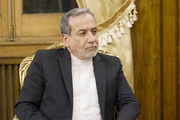
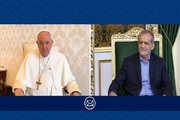

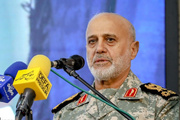

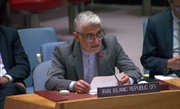
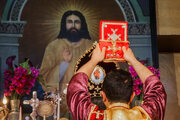

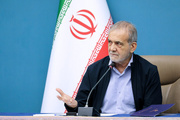
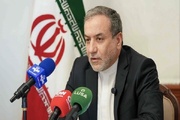










Your Comment